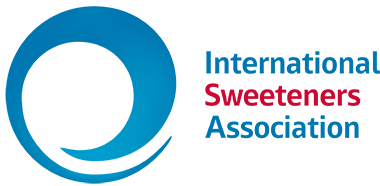Abstract
Background: The food industry uses artificial sweeteners in a wide range of foods and beverages as alternatives to added sugars, for which deleterious effects on several chronic diseases are now well established. The safety of these food additives is debated, with conflicting findings regarding their role in the aetiology of various diseases. In particular, their carcinogenicity has been suggested by several experimental studies, but robust epidemiological evidence is lacking. Thus, our objective was to investigate the associations between artificial sweetener intakes (total from all dietary sources, and most frequently consumed ones: aspartame [E951], acesulfame-K [E950], and sucralose [E955]) and cancer risk (overall and by site).
Methods and findings: Overall, 102,865 adults from the French population-based cohort NutriNet-Santé (2009-2021) were included (median follow-up time = 7.8 years). Dietary intakes and consumption of sweeteners were obtained by repeated 24-hour dietary records including brand names of industrial products. Associations between sweeteners and cancer incidence were assessed by Cox proportional hazards models, adjusted for age, sex, education, physical activity, smoking, body mass index, height, weight gain during follow-up, diabetes, family history of cancer, number of 24-hour dietary records, and baseline intakes of energy, alcohol, sodium, saturated fatty acids, fibre, sugar, fruit and vegetables, whole-grain foods, and dairy products. Compared to non-consumers, higher consumers of total artificial sweeteners (i.e., above the median exposure in consumers) had higher risk of overall cancer (n = 3,358 cases, hazard ratio [HR] = 1.13 [95% CI 1.03 to 1.25], P-trend = 0.002). In particular, aspartame (HR = 1.15 [95% CI 1.03 to 1.28], P = 0.002) and acesulfame-K (HR = 1.13 [95% CI 1.01 to 1.26], P = 0.007) were associated with increased cancer risk. Higher risks were also observed for breast cancer (n = 979 cases, HR = 1.22 [95% CI 1.01 to 1.48], P = 0.036, for aspartame) and obesity-related cancers (n = 2,023 cases, HR = 1.13 [95% CI 1.00 to 1.28], P = 0.036, for total artificial sweeteners, and HR = 1.15 [95% CI 1.01 to 1.32], P = 0.026, for aspartame). Limitations of this study include potential selection bias, residual confounding, and reverse causality, though sensitivity analyses were performed to address these concerns.
Conclusions: In this large cohort study, artificial sweeteners (especially aspartame and acesulfame-K), which are used in many food and beverage brands worldwide, were associated with increased cancer risk. These findings provide important and novel insights for the ongoing re-evaluation of food additive sweeteners by the European Food Safety Authority and other health agencies globally.
Summary
The current analysis of data from the French NutriNet-Santé cohort reports a positive association between higher intake of low/no calorie sweeteners and overall cancer risk, which however is in contrast with the collective evidence from epidemiological research and the opinions of food safety bodies worldwide.
In a 7.7-year follow-up of 102,865 participants of the French NutriNet-Santé cohort study, a web-based, non-representative and predominantly female cohort, 3358 incident cancer cases were reported. Participants were divided into 3 groups: non-consumers (63.1%), lower consumers (18.5%), and higher consumers (18.5%). The study results reported that low/no calorie sweetener intake was associated with increased cancer risk with a multivariate Hazard Ratio (HR) of 1.13 for higher consumers. Higher cancer risks were also reported for aspartame and acesulfame-K but not for sucralose.
Experts on epidemiology and toxicology comment that causal inference from observational studies on the basis of relative risks or HRs of the order of 1.1-1.2 remain open to criticism due to residual confounding and bias. There is high probability of residual confounding from the many risk factors that were found to be more prevalent in consumers of low/no calorie sweeteners in this study compared with non-consumers, including being more often smokers, less physically active, following a less healthy diet and having higher BMI. For example, adjustment for BMI and several other covariates led to a substantial reduction of the HRs, which indicates that residual confounding may largely or totally explain the reported associations.
In addition, there is no dose-risk relationship between low/no calorie sweeteners’ intake and risk of cancer. Despite a 10-fold higher consumption of low/no calorie sweeteners in higher versus lower consumers, the Hazard Ratio for all cancers relative to non-consumers was very similar and associations remained in the extremely weak range, i.e. the HR of all cancers for total low/no calorie sweeteners was 1.14 for lower consumers and 1.13 for higher consumers.
Importantly, cancer epidemiology research does not support a relationship between low/no calorie sweeteners’ intake and an increased risk of cancer, as shown in recent large studies and reviews. This is in line with the conclusions reached by food safety agencies around the world and their confirmation that low/no calorie sweeteners do not bear a carcinogenic risk, and therefore are safe.
Experts’ comments in response to the study by Debras et al are available online here.
An ISA statement in response to the study by Debras et al is available online here.

